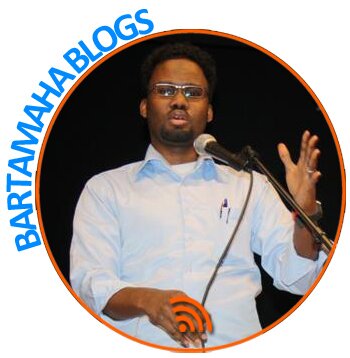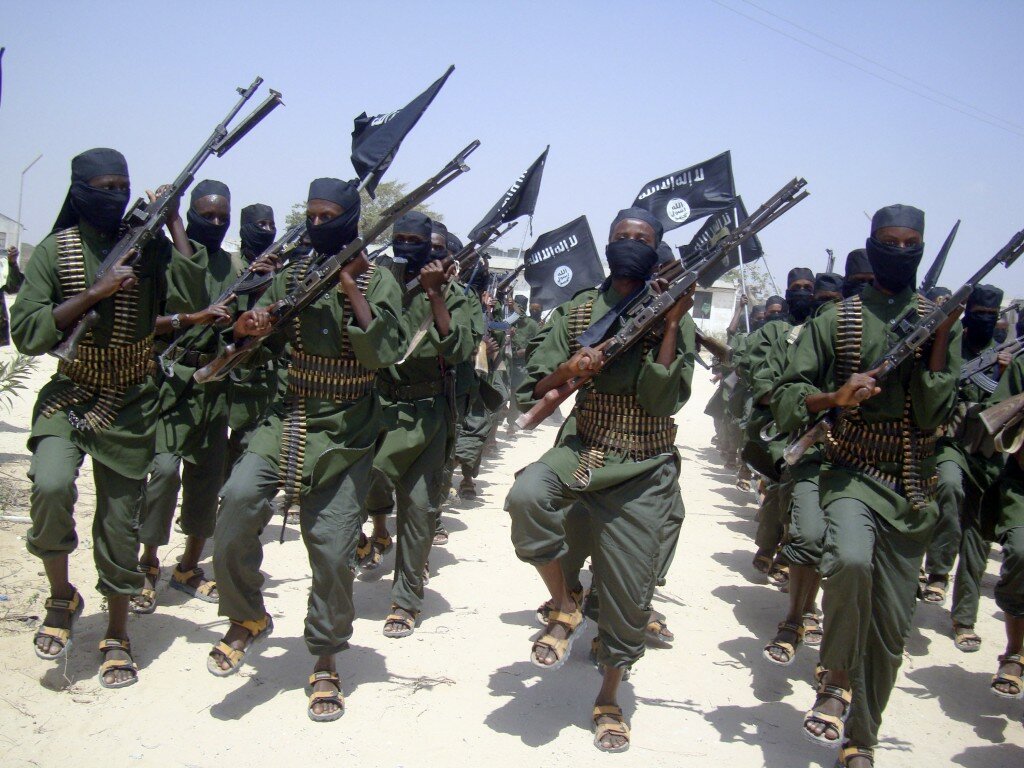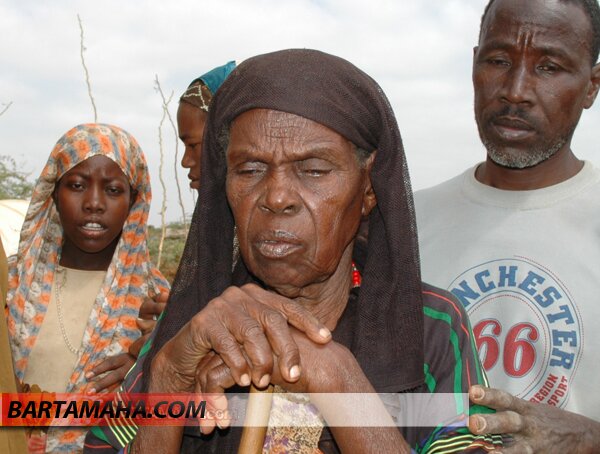Deja vu in the twilight zone of History
 Written by Dayib A. Atto — Early in the morning on the day after the Mu’adhan was shot and the prayer calls were silenced in this old town, the entire family of Mohamud Ali Haaji – a local maritime trader and a former Naa’ib to Eel-Buur – went to the harbor to get onto the Banian (Baaniyaal) trader’s dhow, the family now leaving behind their hometown which has now become engulfed by a new cycle of war in which Somalis were again murdering one other in a conflict that were largely fueled by a foreign instigated blood lust.
Written by Dayib A. Atto — Early in the morning on the day after the Mu’adhan was shot and the prayer calls were silenced in this old town, the entire family of Mohamud Ali Haaji – a local maritime trader and a former Naa’ib to Eel-Buur – went to the harbor to get onto the Banian (Baaniyaal) trader’s dhow, the family now leaving behind their hometown which has now become engulfed by a new cycle of war in which Somalis were again murdering one other in a conflict that were largely fueled by a foreign instigated blood lust.
Here this day on the horizon beyond the pale yellow dunes, marauding flocks of scavenger birds were seen circling the skies above the ground where men now lied dead and dying.
The dhow dangerously over-crowded with internally displaced people sailed north, where after a harrowing journey dropped anchor at the natural harbor near the small coastal village of Eyl – the now famous hamlet of the modern pirate lore.
It was here that within a year in 1927 Dahabo Ahmed Isse would give birth to the fourth child of the Atto household, as the family still remained out of place surrounded by the tumult and the turmoil caused by Mussolini’s military campaigns in North East Somalia.
The newborn baby was named Ahmed and was also given the nickname ‘Dayuurad’ like many other baby boys of that period on the occasion of seeing for the first time an airplane fly over that area of the Somalia.
In the year of 1926, the place my grandfather’s family was evacuating from was Hobyo (Obbia), the seat of what was at that time known to the world as the Obbian Sultanate.
Sixty five years later, in the year 1991 some of the progeny of the Mohamud Ali Haji and Dahabo Ahmed Isse were once again on the run and like the homing instincts of migrating birdst unconsciously following a preordained trajectory, after being once more displaced by another tribal war.
The family of Ahmed Mohamud Ali (now a.k.a Ahmed Atto), the fourth child who was born in Eyl in-1927 were now in the year 1991 in the southern city of Kismayo, having already left behind their home in Mogadishu and now on the brink to a flight of what will become by far the most scattering exodus – an event that is in my opinion a rupturing buckle in the timeline of the many unresolved opposing historical narratives of the Somalis, conflicting narratives that were kept boiling underground and under pressure for far too long, and culminated in the explosive release of a catastrophic societal earthquake that was sixty four years in the making.
Here again early one morning, the family now consisting of Ahmed Atto’s wife (Afiya), a son (Abdisalan) and a daughter (Amal) together went to the harbor to scramble for a place on a waiting boat, after escaping Mogadishu and here again evacuating from their second home in Kismayo, both places now red with blood.
The boat like the one grandpa’s family took sixty five years ago was overcrowded with displaced people and was now being forced to leave the harbor in a haste, barely escaping the gunfire from the tribal militias that were taking over the town.
After a long arduous journey to the north, in an eerily similar situation of sixty five years ago, the boat once again dropped anchor at the natural harbor of the coastal village of Eyl – the now famous hamlet of the modern pirate lore, once again.
What happened to my family is not unique, like many others in the land of the Somalis we lost family members in all of the major cycles of these recurring wars, but there is a very important lesson to be learned from these repetitive boat rides to Eyl.
What these boat rides to the waters of Eyl, at gun point 65 years apart by my family is telling is that we ignore history at our own peril.
The history of the Obbian Sultanate has not been told by the Historians in a scholarly way, all we know about this period of the Somali history, which lasted for almost 50 years, (much longer than both Sayid Mohamed’s Dervish movement and the last Somali Republic), is a series of twisted tales told in half truths, innuendos and hearsay, yet if one looks a little deeper it might be possible to discover that many twisting and turning roads of the history of what has taken place in Somalia since 1926 lead directly to the Obbian Sultanate.
Some of the key founders of the SYL were originally from Obbia, I can even go farther and take a short leap of imagination and propose that there was an element of “Obbian revenge” against the then defeated Fascists that inspired the creation of the SYL’s movement in 1943, the SYL’s written method of private and confidential communication was carried out in the Osmanya script, Abdullahi Isse - the first prime minister, Abdirashid Ali Shermake (the second president) and Abdirizak Haji Husein (the third Prime minister) all had a background, directly or otherwise, from the Obbian Sultanate.
But this is not all, like many other places in the land of the Somalis, the history of Obbia is not a happy one and the Sultanate was not perfect, but neither is nor was any other Somali political system, before it or since then, and for that reason ultimately the roots of the destruction of the last Somali Republic can also be traced directly to the Obbian Sultanate.
The guns of the tribal militias of the 1991 roared and echoed within the distorted parameters of an Obbian time-warp, most of the fight was a direct continuation of a suddenly defrosted 65 year old unresolved tribal grudge.
We could have all avoided falling again into the vortex of this endless folly if the history of Somalia was taught in the open and without censorship, if the history of the inter-tribal relations of the Somali people, good or bad, was taught without fear and were not treated like a forbidden knowledge to be shunned and hidden, the issues would have been debated in the open, and the exaggerations, the distortions and the lies would have been isolated, corrected or discarded away, then the tribes would have come to an agreement of sorts based on the final result from a well debated and analyzed truth.
But the tendencies to control information and hide the obvious still linger in the Somali psyche, even now in this era of relative information liberation, one can still hear or see Somali news media reports with headlines like:
“ Somali clans fight in Galmudug, Ufeyn and other places†or in Somali †Beelo ku dagaalamay Galmudug, Ufeyn iyo meelo kale†.
Even though the names of the these warring clans are known to every Somali, and the details go instantly to the public domain, what we have here is someone deciding for all of us, and assuming that we as a society cannot handle reading or hearing the names of these warring Somali clans.
History does not care about the manners and the etiquette’s of the day, what one writes today does not only belong to the present, it also belongs to the future so that future generations might use that information as a road map, so that it might keep them from going round and round and do the same mistakes.
Its for these reasons that events need to be written and told as they happen, while still fresh, before they get polluted by the stuff of legends or forgotten or distorted with the passage of time.
Otherwise.., otherwise I see us ending up in that dark circular tunnel in the twilight zone, where the boat is patiently waiting to take us to Eyl, again.
Written by Dayib A. Atto
Article is a dramatized version of a true story.
Comments
comments
 Calendar
Calendar



































